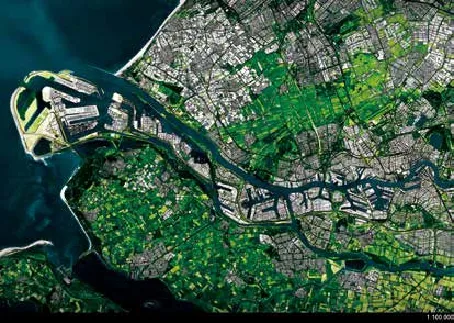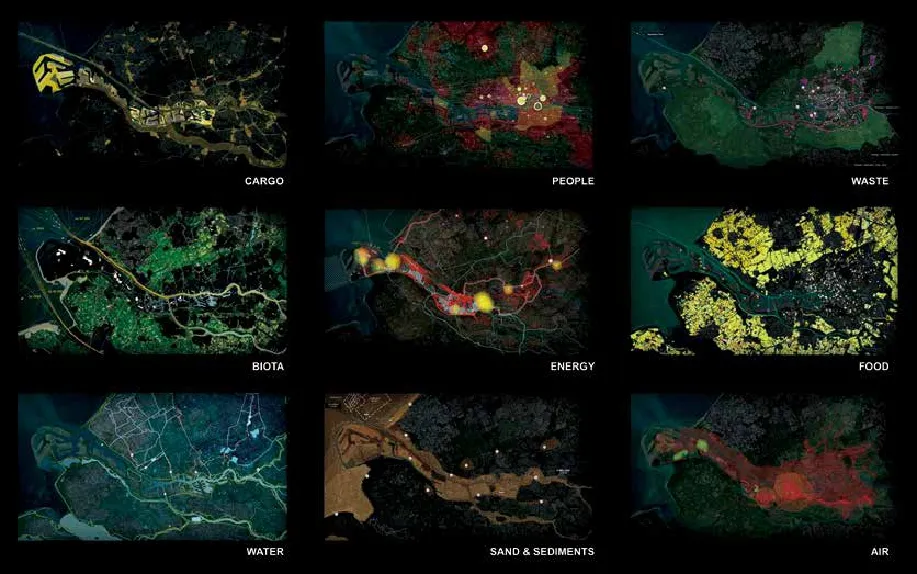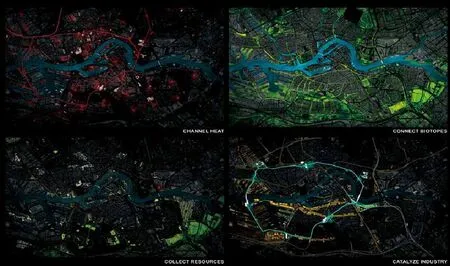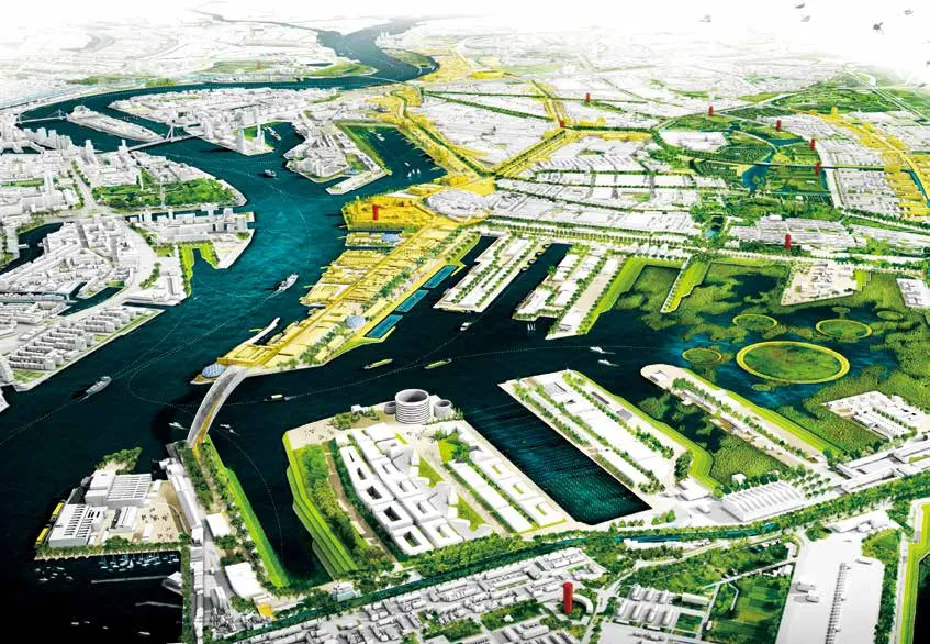城市新陈代谢 — 2014年鹿特丹城市研究双年展 荷兰鹿特丹
2016-11-19
城市新陈代谢 — 2014年鹿特丹城市研究双年展 荷兰鹿特丹
URBAN METABLOSM- 2014 ROTTERDAM BIENNALE RESEARCH & EXHIBTIONROTTERDAM,THENETHERLANDS
时间:2013年- 2014年
第6届鹿特丹国际建筑双年展:自然城市
类型:城市和景观研究、思考、以及咨询,展览设计
预算:5万美元
由鹿特丹国际建筑双年展和鹿特丹市政府资助
竣工:2013年4月
业主:鹿特丹国际建筑双年展
year: 2013-2014
The 6th International Architecture Biennale of Rotterdam (IABR): Urban by Nature
role: Urban and Landscape Research, Speculation, and Consulting. Exhibit design
budget: 50 000
Funded by IABR and The Municipality of Rotterdam
completion: April, 2013
client: IABR
Field Operations 与荷兰 FABRICations 设计工作室携手合作,组建了一家城市研究机构,并在鹿特丹康索博物馆参展2014年鹿特丹国际建筑双年展。
此次合作充分响应了“城市新陈代谢”的主题,诠释了改善鹿特丹地面景观的各类无形动态要素。研究进一步对一些战略性和纲领性的设计变化进行了思考推敲,提议并测试了21世纪港口城市的场景方案。此类创新理念包括将工业废热用于住宅与公共区域的地下城市供热网络,将未使用的港口重新整合入鹿特丹生态矩阵以及位于莱茵河口的沉淀物捕捞基础设施与水产设施,并通过有组织的新型物流道路,在城市中整合入微制造业。
Field Operations, in collaboration with the Dutch design studio FABRICations, composed and exhibited a body of urban research at the Kusthal Museum in Rotterdam for the 2014 International Architecture Biennale of Rotterdam.
The collaboration responded to this year's theme of 'Urban Metabolism' by offering a narrative for various invisible dynamics that shape the Rotterdam landscape. The research moves on to speculate some strategic and programmatic design moves, suggesting and testing scenarios for the 21st century port city. Such speculations include a subterranean urban heat network to use waste industrial heat for residences and public spaces, the reintegration of unused port slips into the Rotterdam ecological matrix, sediment capture infrastructure and aquaculture at the mouth of the Rhine, and integration of micro-manufacturing into the city through a newly articulated logistics boulevard.







